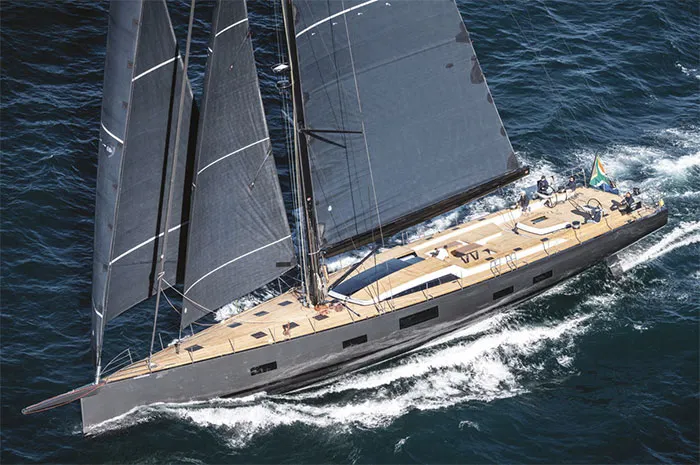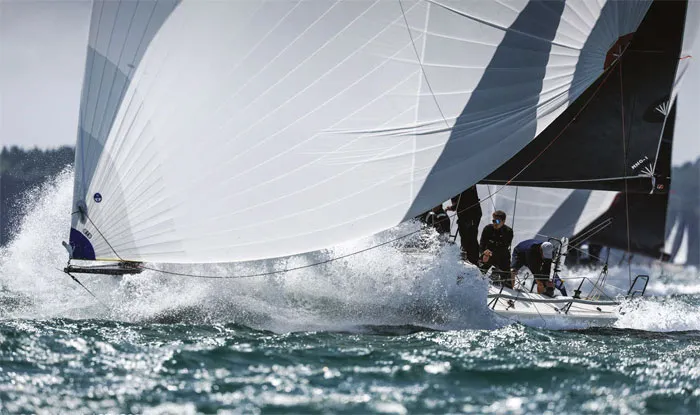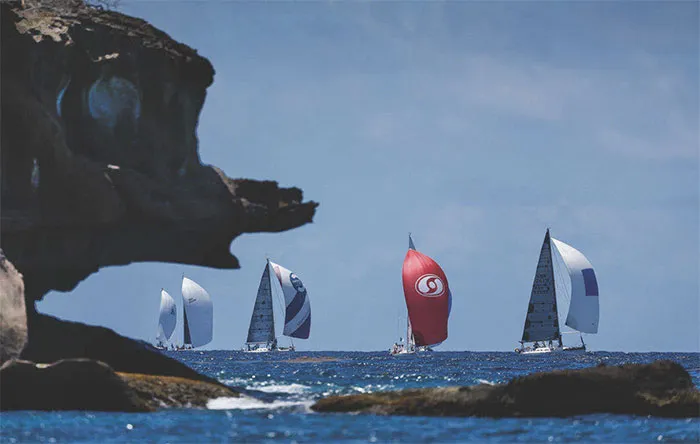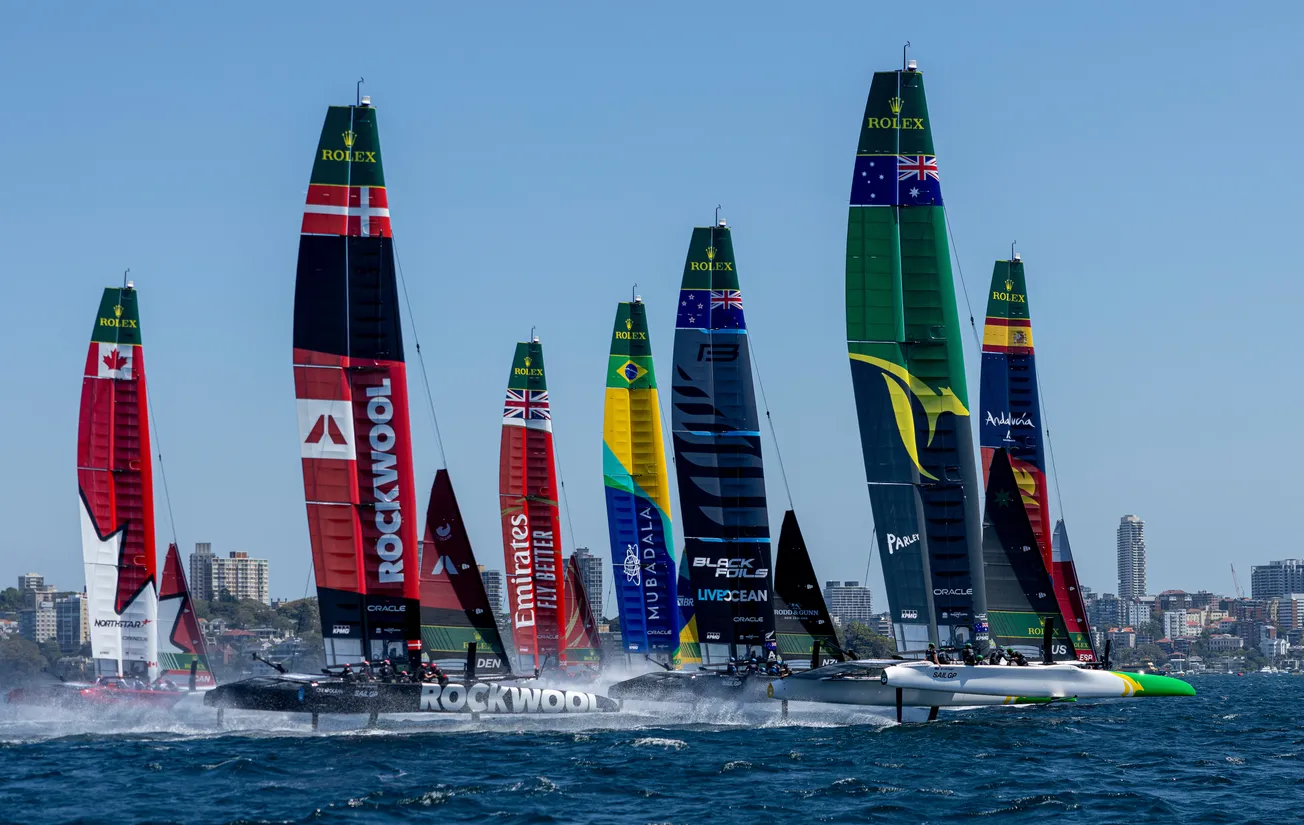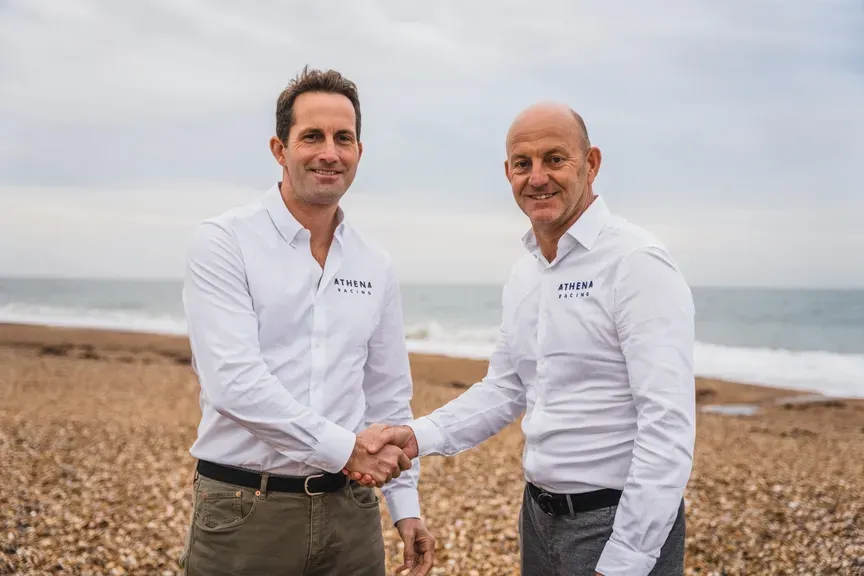


Performance superyachts are awesome machines, combining top-notch sailing qualities with a level of luxury that only a lucky few will ever experience. Creating a lightweight interior with the requisite level of comfort, aesthetics and durability is a complex engineering challenge that Southern Wind Shipyard in Cape Town has been refining for a long time.
We’re sailing close hauled in a rising breeze with the boat beautifully settled in the groove and fully powered up at double digit boatspeed. The helm has the wonderfully responsive feel of a proper thoroughbred design and it’s easy to ease the boat over the biggest crests of the long ocean swell.
This, of course, is a scenario that will be familiar to many Seahorse readers, yet I’m sailing a 30-plus metre superyacht with a sumptuous interior and all the complex hotel systems that are essential in providing a truly luxurious life on board.
Despite the weight associated with all this furniture and equipment, when we bear away to head back to port in Cape Town, with the breeze now rising to 25 knots, the boat accelerates quickly under only main and staysail and we’re soon leaving the stern wave well behind. Our speed continues to climb well into the upper teens, yet still with an absolutely reassuring feel on the helm and finger light control.
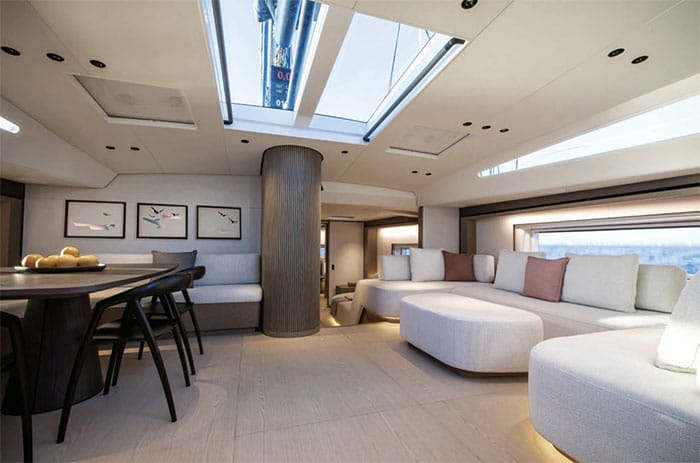
How is it possible to achieve the light displacement that allows such a large and luxurious yacht to be so rewarding to sail? A big part of the answer lies below decks. Even the most apparently sleek and powerful superyachts are often surprisingly heavy thanks to their sophisticated interiors and the sheer weight of all of the systems.
Over the past few decades, Southern Wind, whose production site is based in Cape Town, with sales, marketing and after sales offices in Genoa, has perfected a system of building ultra-lightweight interiors that don’t compromise on style or robustness. As a result, it’s leading the way in the industry in this respect.
While the yard’s Smart Custom approach means each of the last four boats to be launched have very different interior styles, there also needs to be a great deal of commonality in terms of production processes. At the same time, all have plenty of top quality joinery on show, including apparently substantial capping pieces that readily absorb the knocks and bangs that are inevitable with regular use on long ocean passages. In this respect it’s not at all obvious that these aren’t traditionally constructed and therefore heavy interiors.
However, there’s far more to this story than initially meets the eye and the gorgeous aesthetics conceal a complex story. Achieving a balance between the multiple competing requirements of lightweight, durability, functionality and aesthetics is a challenge. ‘It's easy to be heavy and it's easy to be super-light, but it's very difficult to be light, durable and robust, with a very nice finish,’ explains the yard’s interiors technical co-ordinator Silvia Sacchi, who has backgrounds in both naval architecture and interior design.
At first sight simply using lightweight materials sounds like an obvious – and possibly even trivial – solution that should be easy to implement. However, the reality is very different and achieving this is more complex than it might appear and extreme attention to detail is needed to create robust furniture that can withstand tens of thousands of miles use in hard ocean sailing conditions.
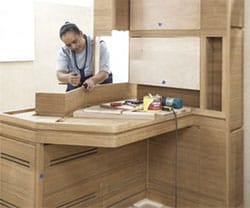
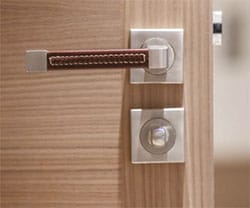
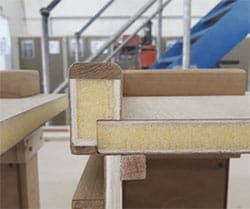
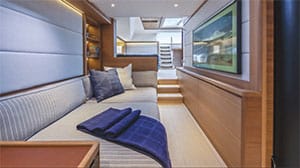
1. Modules of furniture are made in the joinery shop and reassembled on board. 2. Stiff, light and robust foam-core panel with veneer and solid hardwood capping. 3. Much of the beauty is in the fine finish, quality fittings and attention to detail. 4 This lounge area adjacent to the saloon is among the most customised in the yard’s recent builds.
At the same time, there’s no room for compromise in terms of safety, functionality and accessibility for both guests and crew. Equally, the interior must be planned and constructed to facilitate easy maintenance and repair of all the techical equipment on board. Furniture must therefore integrate seamlessly with the boat’s structure and all the systems, including wiring runs and plumbing, allowing easy access wherever necessary.
Looking at the choice of materials in more detail, you can’t, for instance, simply add wooden veneer to lightweight furniture panels, as the edges are not hard wearing. The result would be a yacht that might look great at her launch, but one that will age quickly. However, traditional wooden capping pieces have potential to add a huge amount of weight.
Closing and reinforcing all the edges of sandwich panels is essential for their durability, and Southern Wind uses different construction approaches depending on the finish of the substrates (thick veneered capping, solid inserts, or both) and the function of elements, whether it is a veneered or painted door with hinges or a standard panel.
In addition to being lightweight, with top-notch aesthetics, materials also have to be stable and resist any tendency to warp, even at extremes of temperature and humidity. Materials used by Southern Wind, in addition to foam sandwich, include a 20mm thick honeycomb with a core of kraft paper that has 95 per cent open space inside, and a 1.5mm okoume facing. This has a very high strength to weight ratio, yet the density is only 20 per cent of that of typical marine plywood and less than half that of foam core panels.
‘The core panel that we use to build the furniture is the same for all the boats,’ says Sacchi. ‘The honeycomb with kraft paper inside and okoume applied to the outside is very light compared with an okoume marine plywood - the difference is incredible.’
Hardware such as hinges, latches and handles for locker doors need a stronger base for fasteners than either foam sandwich or the honeycomb can provide. In many cases the solution is in removing the core material locally and adding “hard spots” inside the core that will support the fasteners. This is done in-house and automated using CNC machinery.
‘It’s very difficult to make light and durable joinery with a good finish and a massive effort to foresee where all the hinges need to go,’ adds chief commercial officer Andrea Micheli. ‘In the past everyone used bigger solid wooden framing, but then you lose most of the benefit of the honeycomb.’
Provision of these hard spots is also an important consideration for areas in which owners may, for instance, want to place picture frames. An alternative newly available material that can help in this respect is Albasia blockboard (Furnilite), which Southern Wind has been assessing recently. It will support fasteners without additional reinforcement, but is still only a fraction of the weight of marine plywood.
Alpi is increasingly used for the final finish thanks to its uniform appearance across large areas, whereas traditional veneers may differ in shade, even if they are all from the same batch of timber. Southern Wind typically uses veneers of 0.6 and 1 mm up to 4mm thickness for the edging, which are substantial enough to resist wear and tear providing the edges are protected.
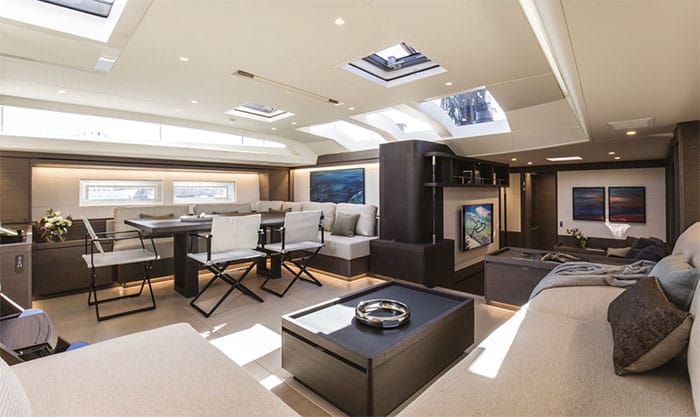
Making Southern Wind’s Smart Custom concept a reality involves blending custom design with standardised construction processes where possible, while maintaining efficiency, consistency and quality. The start of the production process is a big GA (general arrangement) drawing at 1:10 scale. ‘This drawing also triggers the files to the CNC machine that cuts and shapes all the furniture panels,’ says Sacchi. ‘When the prep team receives these panels, they then start the edging process to protect the honeycomb.’
The design office also produces an interior fitment catalogue that details every element of each boat, streamlining the process of adapting details to fit different scenarios. In addition, each boat has a dedicated furniture construction booklet, with 1:1 or larger plans of key construction details, just as you would for a custom yacht. Many elements are mocked up before final installation, which also helps to improve construction efficiency, reducing the lead time for a new boat.
Overall the process is extremely flexible, enabling each yacht to have what appears to be a custom interior that addresses unique client requirements in terms of style and layout, while using the same core construction methods. Sacchi points to the conversion of a studio to a double cabin with a removable desk and a bar locker with roller doors and an organic shape as successful modifications that have been incorporated in recent boats. ‘For the studio we had to design a proper loose desk that can be easily removed and stowed away when not in use,’ says Sacchi, ‘it always involves a lot of hours of design work to get the details right and keep the weight to a minimum.
‘Lightweight means that you have to be very streamlined and smart in the design phase,’ she adds. ‘That's how we manage to build boats where no two interiors are the same, but even if they look completely different, we have the same base of design and construction.’
The route to achieving such stylish and comfortable interiors while keeping weight to a minimum wasn’t a single-step process. As with other aspects of its yachts Southern Wind has been refining this element over decades. These techniques remain under continuous development, to reduce the amount of design office time needed for each boat and to more seamlessly integrate these techniques into production processes, thereby reducing build costs while improving an already very high level of quality still further.


